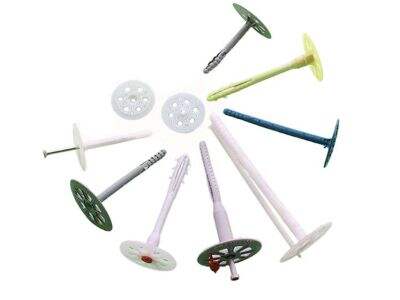Correction materials for insulation are the most necessary for creating the heat level inside your home in the cold winter nights and hot summer days. These materials assist in saving energy costs; thus, you can spend less energy and pay less on your bills, They also help prevent water damage to your home due to moisture getting where it doesn’t belong. Selecting the appropriate materials for fixing insulation is crucial as it ensures the durability and efficiency of your insulation over time. This text explains why insulation fixing materials matter and discusses the pros and cons of usual external insulation fixings materials and some tips for keeping your insulation system strong for many years. We will also go over helpful tricks for installing those materials and maintaining them in good condition.
Why is ⦿ Insulation Fixing Materials & Fixing Systems?
Sealing the insulation in place, insulation fixing materials are an important component of this essential process. They keep the insulation in place, preventing it from falling down or shifting around if it is not properly secured. These materials also work to seal gaps and cracks in your home, decreasing the chances of air leaks. This matters because air leaks force your heating and cooling systems to work harder, consuming more energy. Your insulation acts to keep your home comfortable all year when it is doing its job.
These are the best products to use repairing insulation, since they are essential in retaining the R-value of your insulation. R-value is a numeric indication of insulation's resistance to heat transfer. When your insulation has a high R-value, it means that it works really well to keep the heat in during winter and the heat out during summer. But if you are not using proper fixing materials, your insulation may not act well with time. That can drive up your energy bills as your heating and cooling systems will have to work harder. It can also cause discomfort in your home, because it won’t always hold the right temperature.
The 3 Main Types of Insulation Fixing materials
Its strength and durability matter to you, so when you are selecting insulation fixing materials, pay attention. Seek out durable, moisture-resistant materials. Moisture can deteriorate materials and lead to trouble over time, so it’s better to pick ones that will hold up to it. Manufacturers such as Yifang produce high-quality insulation fasteners that stand the test of time. Specifications make these fasteners in such a manner that offers long-term performance, thus ensuring your insulation system remains effective for years to come.
The right insulation fasteners: Choosing the right insulation fasteners will ensure your insulation system is effective. This means your home remains comfortable, and your energy costs remain lower. Before purchasing materials, it’s a good idea to check them out to ensure that they’re a good fit for your project.
A breakdown of the Pros and Cons of Common Insulation Fasteners
There are various kinds of insulation fasteners, each with advantages and disadvantages. So the main types of fasteners that you may see included are:
Staples – Staples are low-cost and simple to use; they are used in many projects. But too much pressure with staples can compromise the insulation. So when you do use them, be cautious.
Common glue: Glue is another low—tech solution that is easy to apply and provides good adhesion between the insulation and the surface. However, glue might also be very messy to use, and if the need arises to remove it later, it can be tough.
Tapes: User friendly, tape is also nice to the insulation.
Tryng out new ones is understandable, but they don't always hold as well as other fasteners, and can wear off over time. That means it’s important to check them regularly.
Screws: Screws are also quite strong and durable insulating materials that can be used for many types of insulating projects. But they can be a bit tricky to install correctly, and if the work isn’t done carefully, they may do damage to the insulation.
Yifang offers insulation fasteners that have the right balance of strength and durability without damaging the insulation. Selecting the appropriate fasteners for your project ensures that your insulation system functions properly for years to come.
How To Preserve The Longevity Of Your Insulation System
Besides selecting proper insulation fixing quality, here are some other tricks to make sure your insulation system remains effective for a long time: Here are some helpful tips:
Follow the instructions: you must always ensure you abide by the instructions laid down for these insulation fixing washer materials by the manufacturer. This will ensure the materials are used properly and that your insulation system is operating correctly.
So it is a good idea to inspect your insulation system regularly. This involves ensuring that the fixing materials are secure and in the right condition. If there is any damage or wear, make the necessary replacements as soon as possible to continue effectively filtering the air.
Keep the temperature and humidity levels right: Maintaining the proper temperature and humidity levels inside of your home can work wonders in preventing moisture. Your insulation system can be damaged by moisture, so you want to keep everything balanced.
Keep pests out: You want to keep pests away from your insulation, as insects and larger vermin will dig their way in or build nests. Sealing up holes and cracks to prevent pests from getting in as well as using pest control (if needed) will help keep them at bay. This will aid in keeping your insulation system free of unnecessary wreckage.
How To Install and Maintain Them Successfully
As such, installing and maintaining an insulation system takes a modicum of knowledge and skill. Below are some helpful tips for successful installation and maintenance:
Use appropriate fixing materials as per requirements of the insulation systems.
For both installation and maintenance, always adhere to the manufacturer's guidelines. Then, this is how you will get things right.
Mitigate Moisture Buildup: Keep your insulation system safe from damage By taking action This includes keeping humidity levels in check and repairing leaks as soon as they’re discovered.
Monitor your insulation system on a regular basis. Identify any damaged materials and replace them where required to keep all functioning.
Following these tips will keep your insulation system performing effectively and efficiently for years to come.
 EN
EN
 AR
AR
 BG
BG
 HR
HR
 CS
CS
 DA
DA
 NL
NL
 FI
FI
 FR
FR
 DE
DE
 EL
EL
 HI
HI
 IT
IT
 JA
JA
 KO
KO
 NO
NO
 PL
PL
 PT
PT
 RO
RO
 RU
RU
 ES
ES
 SV
SV
 TL
TL
 IW
IW
 ID
ID
 SR
SR
 UK
UK
 VI
VI
 HU
HU
 TH
TH
 TR
TR
 FA
FA
 MS
MS
 GA
GA
 IS
IS
 LA
LA
 MN
MN
 NE
NE
 KK
KK
 UZ
UZ



